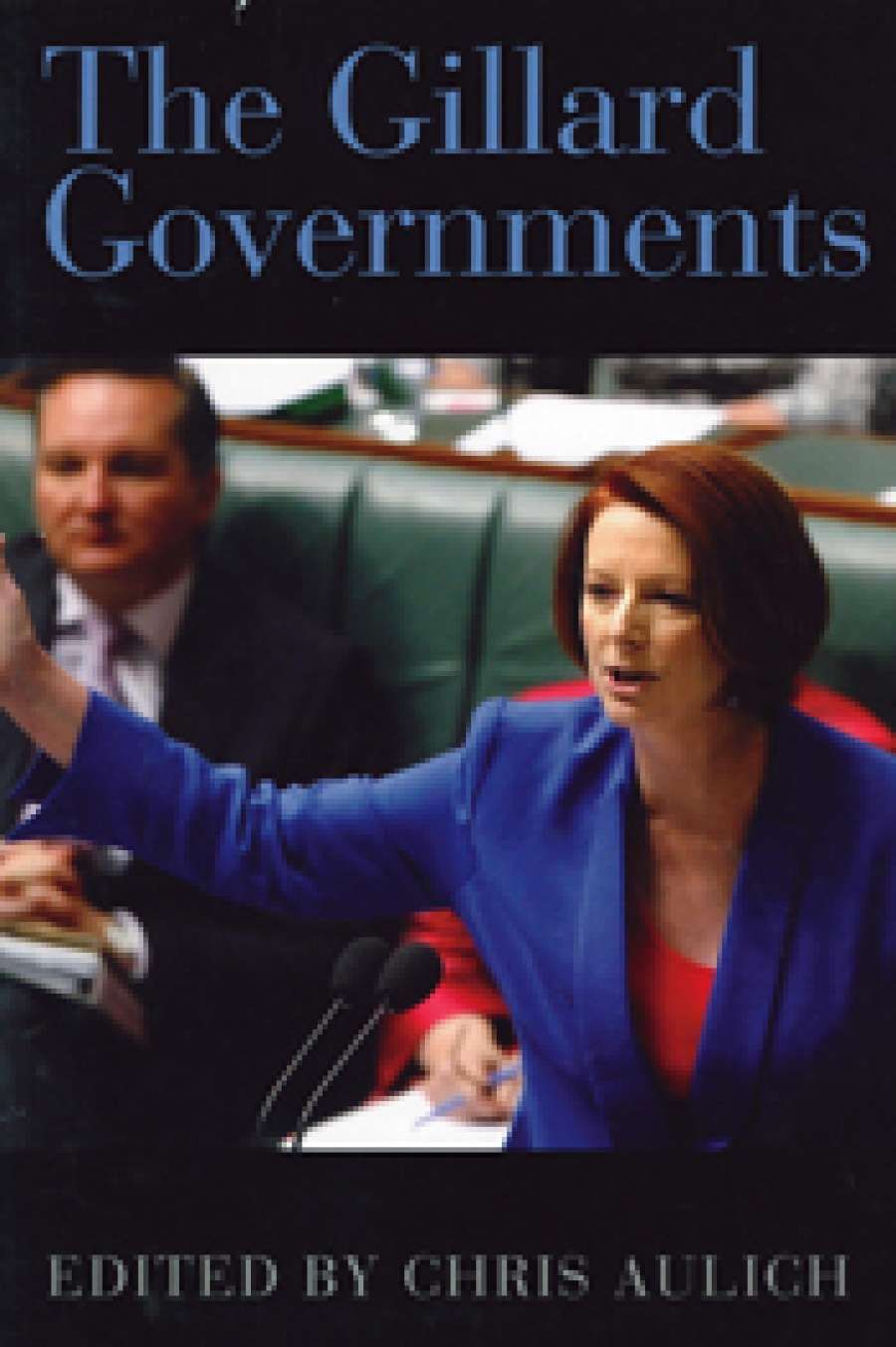
- Free Article: No
- Contents Category: Politics
- Review Article: Yes
- Article Title: Active minority
- Online Only: No
- Custom Highlight Text:
The prime ministership of Julia Gillard attracted an immense amount of media attention, not least because of the novelty of a female leader aspiring to embody the values and dreams of the Australian people. As opposition to her policies and style grew, Gillard as the government figurehead was at times subjected to extremist protests that used her gender as a weapon. Gillard’s prime ministership and perceptions of female power in contemporary Australia are issues explored in various chapters of The Gillard Governments, though not as extensively as its back-cover blurb would have us believe. The contributors to this edited volume are more interested in understanding the government’s policy development, administration and machinery of government than in the prime minister and her individual challenges.
- Book 1 Title: The Gillard Governments
- Book 1 Subtitle: Australian Commonwealth administration
- Book 1 Biblio: Melbourne University Press $34.99 pb, 346 pp, 9780522864540
- Book 1 Readings Link: booktopia.kh4ffx.net/7mqzAQ
Edited by Chris Aulich, The Gillard Governments is the latest volume in a long series of books that focus on Commonwealth administration during a specific period. The current editor has invited a range of contributors to write chapters on aspects of Commonwealth administration during the years under review (2010–13), including the institutions of government (such as the public service), policy issues (such as the economy), and the prime ministership. The authors come from a variety of backgrounds, but most are academic researchers in public administration, public policy or political science. Naturally, several listed contributors are affiliated with the ANZSOG Institute for Governance, University of Canberra, which organises this series of publications.
Each individual chapter is very scholarly, well-referenced and would not be out of place in the pages of learned publications such as the Australian Journal of Public Administration. However, few concessions are made to entice the interest of the general reader. Probably unintentionally, many of the articles appear to have been written by government-oriented academics for government-oriented academics alone. This is a pity, as books such as this have a potentially strong role to play in informing the general public about the nature of parliament, which is often misrepresented by an increasingly sensationalist, crisis-hungry news media.
The book would have benefited from a more detailed account of the rise and fall of the first Rudd government (2007–10), along with a stronger biographical portrait of Gillard and her general background. Nevertheless, the authors have done future researchers a service by highlighting key events and themes of the Gillard era that might otherwise have been forgotten in an age where electronic data is fragile. Some authors believe that Gillard deserves credit for running a more orderly and more productive administration than her predecessor. Gillard successfully negotiated agreements with the Greens and several independents to form a minority government. Despite some tensions, the minority government was held together for a full term, and 561 pieces of legislation passed both Houses of Parliament.
The impression that one forms after reading this book is that Australian politics remains in thrall to short-term political solutions to complex problems such as offshore processing of asylum seekers. The continued government emphasis on party political advisers must influence this ‘short-termism’. The spectre of the twenty-four-hour news cycle also haunted Gillard, as some contributors in the present collection have implied. News does not break much faster than it did ten years ago. The difference is that several media organisations now have to publish new stories and angles all day: as a consequence, a government’s political image, rather than its actual policies, is placed under more intense scrutiny than ever before. Real and imagined attempts by Rudd to regain the leadership absorbed media attention that might otherwise have been spent reporting on government initiatives.
 Julia Gillard, 2011
Julia Gillard, 2011
(photograph by Kate Lundy)
As Aulich points out, the Gillard government failed to produce a convincing narrative to provide strong legitimacy for itself as an administration. Gillard toppled a popularly elected leader before the end of his first term, but never provided electors with a strong justification for her actions. It was also not clear what the government stood for, beyond the desire to stay in power. Even Gillard’s alleged enthusiasm for a so-called ‘Education Revolution’ reflected the narrowly economic, vocational view of schooling expressed by generations of politicians. The broader view of education as a means of understanding and appreciating the world seems absent in modern political life.
A number of essays stand out in this collection. Young and Ricketson’s analysis of the government’s relations with the media benefits from its use of international comparisons, which show that the trivialisation of female authority in the media is a global problem. Elsewhere, Prosser and Warhurst have written an interesting account of independent MPs seeking Commonwealth parliamentary reform between 2010 and 2013, setting it in the context of two decades of independent state MPs calling for similar changes (e.g. greater transparency). Finally, Botterill and Cockfield provide a useful background to recent rural and regional policy. They highlight the way in which a generally market-based liberal approach to pastoralism and farming by the Commonwealth is complicated by the visceral agrarianism of rural communities and the vaguer sentimentality towards the land expressed by city folk.
In all, this is a thoughtful collection of articles which will have most appeal to public policy/administration academics and readers already familiar with the terrain covered. It will be a useful reference book for political historians in years to come.


Comments powered by CComment